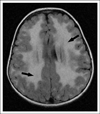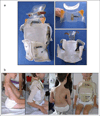Consensus statement on standard of care for congenital muscular dystrophies
- PMID: 21078917
- PMCID: PMC5207780
- DOI: 10.1177/0883073810381924
Consensus statement on standard of care for congenital muscular dystrophies
Abstract
Congenital muscular dystrophies are a group of rare neuromuscular disorders with a wide spectrum of clinical phenotypes. Recent advances in understanding the molecular pathogenesis of congenital muscular dystrophy have enabled better diagnosis. However, medical care for patients with congenital muscular dystrophy remains very diverse. Advances in many areas of medical technology have not been adopted in clinical practice. The International Standard of Care Committee for Congenital Muscular Dystrophy was established to identify current care issues, review literature for evidence-based practice, and achieve consensus on care recommendations in 7 areas: diagnosis, neurology, pulmonology, orthopedics/rehabilitation, gastroenterology/ nutrition/speech/oral care, cardiology, and palliative care. To achieve consensus on the care recommendations, 2 separate online surveys were conducted to poll opinions from experts in the field and from congenital muscular dystrophy families. The final consensus was achieved in a 3-day workshop conducted in Brussels, Belgium, in November 2009. This consensus statement describes the care recommendations from this committee.
Conflict of interest statement
Declaration of Conflicting Interests The authors declared no potential conflicts of interest with respect to the authorship and/or publication of this article.
Figures



References
-
- Strauss RP, Sharp MC, Lorch SC, Kachalia B. Physicians and the communication of “bad news”: parent experiences of being informed of their child’s cleft lip and/or palate. Pediatrics. 1995;96(1, pt 1):82–89. - PubMed
-
- Noeker M. Epilepsy—improvement of giving the diagnosis between the demands for standardisation versus individualisation. Seizure. 2004;13:95–98. - PubMed
-
- Muntoni F, Guicheney P. 85th ENMC International Workshop on Congenital Muscular Dystrophy. 6th International CMD Workshop. 1st Workshop of the Myo-Cluster Project GENRE. 27–28th October 2000, Naarden, The Netherlands. Neuromuscul Disord. 2002;12:69–78. - PubMed
Publication types
MeSH terms
Grants and funding
LinkOut - more resources
Full Text Sources
Medical

